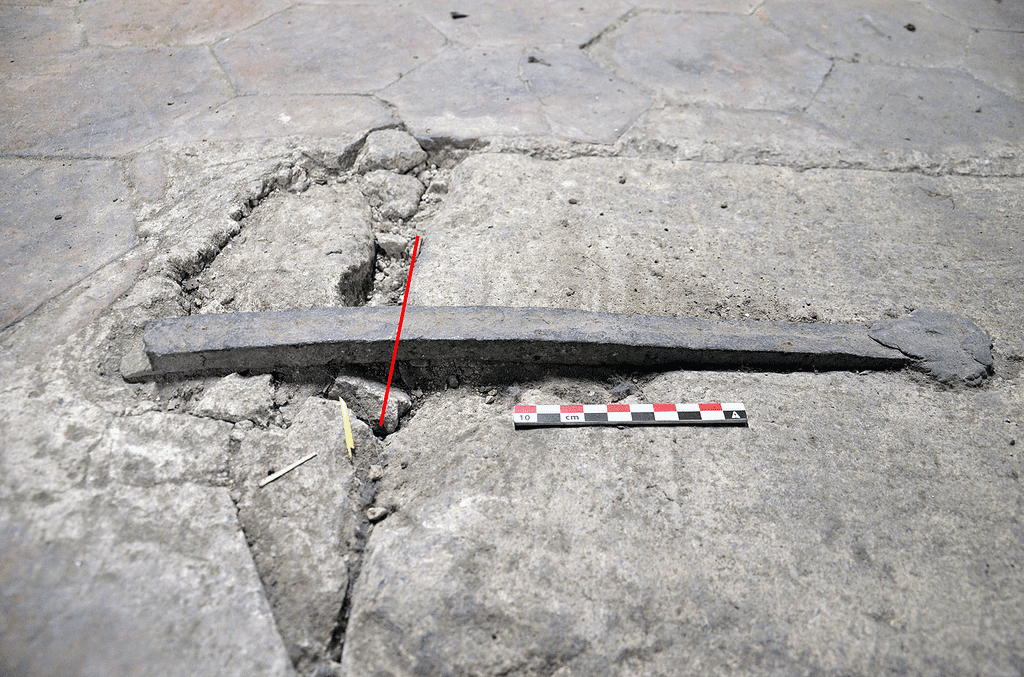
The Notre-Dame de Paris Cathedral is one of the most iconic landmarks in Europe, an architectural marvel of its time due to its intricate Gothic-style design. It has been a symbol of Paris for over 800 years and has played a role in many significant historical events, including the French Revolution and World War II.
But in 2019, disaster struck when a devastating fire caused significant damage to the cathedral, much to the world’s shock.
Luckily, the outpouring of support and donations from people all over the world have funded an ongoing restoration that will see Notre-Dame shine brighter than ever before over the Paris skyline. And in the process, this regrettable fire has also revealed secrets about the construction of the cathedral that have been shrouded in obscurity for the last centuries.
The first iron lady
In a new study, researchers led by Maxime L’Héritier of Université Paris 8 discovered that Notre-Dame, whose original structure was erected in the 1160s, was the first Gothic-style cathedral constructed with extensive use of iron to bind stones together, making it a remarkable feat of medieval engineering.
The unique conditions of the fire exposed previously concealed parts of Notre-Dame, including many iron frames, much to everyone’s surprise. These include iron “staples” embedded inside the masonry and the monolithic columns, but also iron reinforcements like nails of various sizes, as well as keyed and bolted rods.
Previously, researchers found that 13th-century Gothic cathedrals, such as Bourges , Chartres , Rouen or Troyes, also extensively used iron as a building material, but the new findings show that Notre-Dame’s use of iron predates them all by at least 50 years.
“This was truly a discovery as these staples were not known before that. The dating we carried out confirms that all of them were indeed placed at the time of construction. Notre-Dame then appears to be the building site where this innovation (of using iron elements in slender gothic stone architecture) took place, 40 to 50 years before what we previously knew of,” L’Héritier told ZME Science in an email.

L’Héritier was part of an extensive team of medieval historians, restoration experts, and other researchers who were charged with conducting a study of the metals in the cathedral by the French ministry of culture and the National Center for Scientific Research. The work was difficult as the researchers had to extract and study samples from sections that were not secured or scaffolded. Often they had to wear special harnesses to scale the cathedral’s framework and reach the inner parts of the masonry above the vaults. Lead dust pollution was rampant throughout the site. “This was a unique experience,” L’Héritier sums it up.
Radiocarbon dating, microscopic, chemical, and architectural analyses were performed on the samples to confirm the use of iron staples in Notre-Dame’s construction in the 1160s. These analyses also suggest that iron staples were used throughout the entire structure of the building, including the tribunes, nave aisles, and upper walls.

The placement of the ion staples is no coincidence. These sections of the cathedral’s structure are the most vulnerable to collapse due to massive lateral forces generated by a 35-meter-tall stone building.
“Iron is here viewed as a reinforcement of stone in a dynamic way rather than making the material itself more resistant as reinforced concrete. Iron armatures in gothic churches rather prevent stone blocks from moving (to a certain extent) and keep entire parts of masonries from falling apart. But the masonry keeps a certain flexibility (due to mortar and lead joints), which is necessary for such slender and tall construction, which is not the case of concrete blocks,” L’Héritier adds.
Insight into Medieval Iron Production
The discovery of iron staples in Notre-Dame’s construction also provides insight into the medieval iron trade, circulation, and forging in 12th and 13th century Paris. The staples appear to have been forged by welding together pieces of iron obtained from a number of different supply sources. Further analyses of Notre-Dame samples and historical iron producers in the region are needed to confirm and expand on these findings regarding the medieval Parisian iron market.
Overall, the findings suggest that Notre-Dame de Paris is the first known cathedral of Gothic-style architecture to be initially constructed with extensive use of iron to bind stones together. The study also deepens our understanding of the technological advances of medieval architecture and the iron trade in 12th and 13th-century Paris. Notre-Dame de Paris remains a testament to the ingenuity of its medieval builders, who used several thousand iron staples throughout its construction, making it an engineering marvel of its time.
Reconstruction efforts on the monumental cathedral are still well underway, with plans to reopen to visitors and churchgoers alike in December 2024, French officials announced in early March.
The new findings appeared in the journal PLOS ONE.


